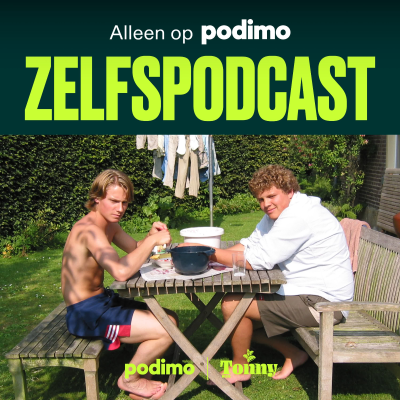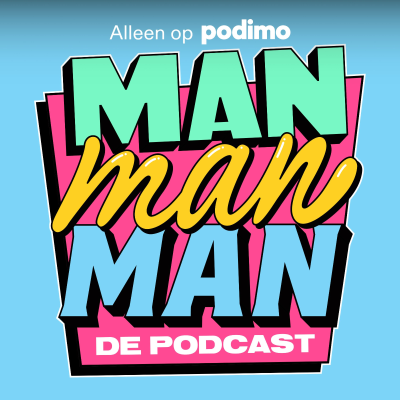
Designer Sketches
Engels
Technologie en Wetenschap
Probeer 0 days gratis. € 9,99 / maand na proefperiode. Elk moment opzegbaar.
Over Designer Sketches
Learn from history’s most influential product designers. Each episode, I will delve into the work of an impactful designer and share insights to inspire our work. Design is the fascinating intersection of productive function and emotional form. As thinking beings, we use products to get things done, but as feeling humans, we want to enjoy doing it. This podcast is about the designers who have come before us and wrangled form and function into something that is the essence of beauty. If you make things, this is for you. Even if you’re not a trained designer, you design something: a business, a service, an event, a message — something that can benefit from the accrued knowledge and experience of the history of design. As we embark on a new era in technology that will challenge our very notion of humanity, it is more important than ever to learn from the mistakes and mastery of previous designers. designersketches.substack.com
Alle afleveringen
5 afleveringenLearning how to speak machine with John Maeda
When John Maeda’s book, How To Speak Machine: Computational Thinking For The Rest Of Us, was published in November 2019, ChatGPT was on version 2 and most of us hadn’t heard of it yet. It wasn’t until ChatGPT3 appeared in the summer of 2020 that it started to seep into the public consciousness. But as a designer and technologist with a long history of working with AI, Maeda had already glimpsed the future, both conceptually and practically. John Maeda is an interesting hybrid of engineer and designer. After studying computer science at MIT, he completed a PhD in design at Tsukuba University’s Institute of Art and Design. With an early interest in combining computers and art, some of his works, like the Morisawa 10 Poster, are part of the permanent collection at the Museum of Modern Art. He returned to MIT as a professor in the Media Lab, working to foster cross-competencies between designers and engineers. Then he served as president of the Rhode Island School of Design (where my brother studied architecture). After RISD, he made a shift into the commercial world, taking influential positions at Automattic (makers of Wordpress), Kleiner Perkins (a venture capital firm in Silicon Valley), and Publicis Sapient (a global consulting company). Today, he has what might be one of the most important design jobs in the world: Vice President of Design and Artificial Intelligence at Microsoft. Now that Pandora’s box has been opened and the explosion of humanistic AI has grabbed everyone’s attention, we’ll probably see an entire genre of books and other writings on the coming AI-pocalypse. But Maeda’s message in How To Speak Machine is one of hope. By outlining the foundational concepts of how machines work, he encourages us to be a little less afraid of them. In each chapter, he patiently and eloquently describes the qualities of these new digital machines and how they’re different from the old mechanical ones. They run infinite loops, they get incomprehensibly large, they effortlessly track everything, they reinforce what they’re fed, and they do all this without ever being fully completed. As you come to better understand these qualities, you realize the exciting potential and concerning risk of AI. When I first read this book back in 2020, I realized the implications and was already recommending it to every designer I was either managing or mentoring. But it wasn’t until I started seeing those animated GIFs showing up on Twitter of AI generating working code and aesthetic graphics based on simple text prompts that it started to sink in how impactful this was going to be and how fast it was going to happen. That was already a few years ago, but it feels like the rate of acceleration is still increasing. Certainly anyone working in technology but not actually writing code should read this book — especially designers. It will help you better understand not only the language of machines, but the culture of our fellow human software engineers. As we enter this new phase of technology, engineers, machines, and the rest of us will have to communicate and work together to write a happy ending to this chapter of human history. Before we dive into speaking machine with John Maeda, I want to give a shout-out to Mr. Tom Froese of the Thoughts on Illustration podcast. We connected through Substack over our Paul Rand episodes, and he was gracious enough to recommend Designer Sketches, resulting in a number of new subscribers and followers. So thank you, Mr. Tom Froese! I hope I can return the favor somehow, and I hope I can meet the expectations of my new audience members. Outline * What, or who, are these machines? (4:01) * The coming zombie apocalypse (10:17) * Timely design and the myth of incompleteness (14:04) * Response to Surviving the AI Illustration Apocalypse (18:09) * Design makes everything palpable (24:33) Links * How To Speak Machine [https://www.goodreads.com/en/book/show/44029589] by John Maeda (Goodreads) * Design in Tech Report 2024 [https://designintech.report/2024/03/12/design-against-ai-2024/] by John Maeda (designintech.report) * Thoughts on Illustration podcast [https://www.tomfroese.com/podcast] (Tom Froese) * Consider it done [https://world.hey.com/bbailey/consider-it-done-83c570f0] by Brian Bailed (world.hey.com) * What AI Can and Cannot Do for UX [https://jakobnielsenphd.substack.com/p/ai-can-cannot-do-ux] by Jakob Nielsen (Substack) * John Maeda on LinkedIn [https://www.linkedin.com/in/johnmaeda/] This is a public episode. If you would like to discuss this with other subscribers or get access to bonus episodes, visit designersketches.substack.com [https://designersketches.substack.com?utm_medium=podcast&utm_campaign=CTA_1]
Charlotte Perriand: The most interesting woman in the world of 20th century design (#4)
Charlotte Perriand is the most interesting woman in the world of 20th century design. Her life story reads like a spy adventure novel. She helped pioneer the Modernist movement in architecture and interior design; she escaped France as the Germans were invading — on a ship bound for Japan; she hid in an attic with her baby from murderous revolutionaries in Vietnam, avoiding almost certain death; she hiked and skied and built portable shelters in the Alps; she visited her husband in Rio and traveled to exotic locations like Tahiti and the Windward Islands, before they were polluted by tourism; And she designed and oversaw construction of one of the premiere French ski resort destinations. Through it all, she exhibited a zest for life and a desire to combine technology with arts and crafts to improve people’s lives around the world. Paraphrasing Henry David Thoreau, she exemplified his motto that before you sit down to create, you have to stand up and live life. Her life of creation — the title of her autobiography — was a life of exhilarating experience. It was also a life of wrestling with contradictions: reconciling global modernism with traditional regionalism, technological progress with preservation of culture, and socialist ideals with the totalitarian realities of the 20th century. In this episode, we’ll explore these themes in Perriand’s own words and reflect on what it might mean for us as designers today. Outline * Irony of modernism (1:30) * Irony of collectivism (25:42) * Perriand’s move away from modernism (37:36) * Irony of progress (51:39) * Her philosophy (59:59) * Parting thoughts (1:06:43) References * Charlotte Perriand: A Life of Creation [https://www.goodreads.com/book/show/3584067-charlotte-perriand] by Charlotte Perriand (Goodreads) * Modern Architecture: A Critical History [https://www.goodreads.com/book/show/70140.Modern_Architecture] by Kenneth Frampton (Goodreads) * Towards a New Architecture [https://www.goodreads.com/book/show/70134.Towards_a_New_Architecture] by Le Corbusier (Goodreads) * A Guide To The World’s Greatest Buildings — Masterpieces of Architecture & Engineering [https://www.goodreads.com/book/show/6286299-a-guide-to-the-world-s-greatest-buildings---masterpieces-of-architecture] edited by Trevor Howells (Goodreads) * Inside Le Corbusier's Brutalist Radiant City [https://skyrisecities.com/news/2016/01/inside-le-corbusiers-brutalist-radiant-city.19158] (SkyriseCities) * Habitat 67 as seen from Montreal’s port [https://en.wikipedia.org/wiki/Habitat_67#/media/File:Habitat_panorama.jpg] (Wikipedia) This is a public episode. If you would like to discuss this with other subscribers or get access to bonus episodes, visit designersketches.substack.com [https://designersketches.substack.com?utm_medium=podcast&utm_campaign=CTA_1]
Paul Rand’s Thoughts on Design: What was he thinking? (#3)
Paul Rand and his work have been much discussed and extolled: Thoughts on Design has been called “a manifesto” and “a bible on modern graphic design.” When Steve Jobs hired him to design the logo for NeXT Computer in 1986, he called him “the greatest living graphic designer.” In a speech honoring Rand (at which he was present), George Lois of Esquire magazine said, “Every art director and graphic designer in the world should kiss his ass.” In the introduction to Thoughts on Design, Paul Rand acknowledges that “many writers and philosophers… have helped to crystalize my thinking.” He calls out John Dewey and Roger Fry in particular. He also refers to some characters from ancient Greece and Rome, including Polykleitos, Vitruvius, and Plato. Who were these Rand influencers? And what insights might they offer today’s designer? As I re-read this exposition of Rand’s principles, I wasn’t finding a lot of relevance to my work today — but then, I’m not an art director or graphic designer — so I decided to go a level deeper, reading source material from Dewey and Fry and revisiting ancient works, to see what I could take away from these influencers. In doing so, I explore questions like: How far back does the idea of “form follows function” go? What do we find so fascinating and instructive about the proportions of the human body? How does Plato’s views on the early education of philosophers relate to the role of humor in design? I hope you’ll join me on this alternative approach to learning from this towering figure of design history. Outline * The Beautiful and the Useful (1:54) * Fascination with human proportion (18:03) * Confusing things (28:38) * Takeaways * Role of humor (48:37) * Tell the story of your solution (52:17) * Be present at the point of execution (58:36) * Conclusion (61:48) References * Thoughts on Design book [https://www.goodreads.com/book/show/22909916-thoughts-on-design] (Goodreads) * Paul Rand book [https://www.goodreads.com/book/show/2568679-paul-rand] by Steven Heller (Goodreads) * Polykleitos [https://en.wikipedia.org/wiki/Polykleitos] (Wikipedia) * Vitruvius [https://en.wikipedia.org/wiki/Vitruvius] (Wikipedia) * Art as Experience [https://www.amazon.com/Art-as-Experience-John-Dewey-ebook/dp/B075WC6JDY/] by John Dewey (Amazon) * Transformations [https://www.google.com/books/edition/Transformations/vno1AAAAMAAJ?hl=en&gbpv=0] by Roger Fry (Google Books) * A Theory of User Delight: Why Usability Is the Foundation for Delightful Experiences [https://www.nngroup.com/articles/theory-user-delight/] (Nielsen Norman Group) * How old is the practice of User Experience Design? [https://world.hey.com/philip.levy/how-old-is-the-practice-of-user-experience-design-46a6e5a7] (HEY World) This is a public episode. If you would like to discuss this with other subscribers or get access to bonus episodes, visit designersketches.substack.com [https://designersketches.substack.com?utm_medium=podcast&utm_campaign=CTA_1]
The Vignelli Canon: Massimo fires shot across bow of vulgar design (#2)
Massimo Vignelli saw the world in black and white — and I’m not talking about one of his favorite color combinations. In his manifesto, The Vignelli Canon, he paints of scene of stark contrast: appropriateness vs arbitrariness, elegance vs vulgarity, discipline vs chaos. About quality, he said there are no hierarchies. “Quality is there or is not there, and if it is not there, we have wasted our time.” A Modern moralist, he traced the birth of his ideology to the publication of the French Encyclopédie in the mid-18th century, the embodiment of Enlightenment thinking at the time. While he does acknowledge this a “personal canon” and “my interpretations of reality,” his simple and powerful words cast him in a superhero persona, a crusading creative living a life of “fight against the ugliness.” In addition to covering his core philosophy, we’ll use this episode to explore themes of timelessness, context, and commercialism and consider the enduring relevance of the Canon. Outline * History (1:11) * Core philosophy * Semantics (2:26) * Syntactics (7:26) * Pragmatics (9:30) * Timelessness (16:40) * American Airlines * Context (32:30) * Dribbblisation of design * Commercialism (41:46) * Bonus: how elegant paper sizes relate to evil-sounding music (47:26) References * Hard copy of the book [https://www.lars-mueller-publishers.com/vignelli-canon] (Lars Müller Publishers) * PDF of the book [https://www.rit.edu/vignellicenter/sites/rit.edu.vignellicenter/files/documents/The%20Vignelli%20Canon.pdf] (rit.edu) * Objectified documentary by Gary Hustwit [https://www.hustwit.com/objectified] (hustwit.com) * American Airlines Rebrands Itself, And America Along With It [https://www.fastcompany.com/1671677/american-airlines-rebrands-itself-and-america-along-with-it] (Fast Company) * American Airlines rebrand upsets Massimo Vignelli [https://www.phaidon.com/agenda/design/articles/2013/january/23/american-airlines-rebrand-upsets-massimo-vignelli/] (Phaidon) * The dribbblisation of design [https://www.intercom.com/blog/the-dribbblisation-of-design/] (Intercom) * Vignelli tribute poster series [https://anthonyneildart.tv/vignelli-forever] (Anthony Neil Dart) This is a public episode. If you would like to discuss this with other subscribers or get access to bonus episodes, visit designersketches.substack.com [https://designersketches.substack.com?utm_medium=podcast&utm_campaign=CTA_1]
Henry Dreyfuss, founding father of American industrial design (#1)
Henry Dreyfuss was a leader of the first generation of industrial designers. He and his team were responsible for the design of some of most ubiquitous and iconic products of the mid-twentieth century: the Bell Model 500 telephone, the Honeywell Round thermostat, and the Polaroid Automatic 100 Land Camera, among many other products and services. Similar to how George Washington established precedents for the American presidency, Dreyfuss was a founding father of American industrial design. He defined expectations for the role of designer and their relationship to engineering and marketing; the balance between commercial objectives and human needs; and the philosophy of design not as a stylistic afterthought, but as an integral part of creating “classic” products that stand the test of time. In his book, The Man in the Brown Suit, Russell Flinchum draws on a wealth of primary sources to explore how Dreyfuss transitioned from a theater designer in the 1920s to one of the “big four” industrial designers during the so-called golden age of industrial design. This monograph (a detailed study on a specialized subject) accompanied a 1997 exhibition of Dreyfuss’s work at the Cooper-Hewitt, National Design Museum, where Flinchum was a fellow. From the 1920s through the 60s, Flinchum covers how Dreyfuss’s work evolved and his influence grew while staying committed to the Five Points that outlined his design philosophy: safety and convenience of use, ease of maintenance, cost, appeal, and appearance — importantly, in that order. Referred to as both the “dean” and the “conscience” of the field, he was considered by his friends, family, and colleagues, above all, a person of integrity. As a user experience designer working on enterprise software products today, I think we can learn from how Dreyfuss championed human values during a period of tremendous technological advancement. At the time, it was unprecedented for a designer and his team to have such a widespread impact on the public consumer. He took a principled, considered approach to design that we apparently had to relearn in the twenty-first century with the advent of the internet and the digital age. I first read this book about ten years ago, and as I’ve gone back through it, taking copious notes and capturing inspiring quotes, I’ve regained an appreciation for some of the practical insights and creative mindsets that have influenced me over the years, and reconsidered how I can apply Dreyfuss’s knowledge, experience, and spirit to my own work. Outline * Role of the designer (3:56) * Philosophy (16:55) * Commercialism (30:00) * Takeaways (43:14) References * Henry Dreyfuss, Industrial Designer: The Man in the Brown Suit [https://www.goodreads.com/book/show/968424.Henry_Dreyfuss_Industrial_Designer] (Goodreads) * Classic Honeywell Round Thermostat Teardown [https://www.youtube.com/watch?v=3jdWGcWgKl0] (YouTube) * K&L Trainz NYC 20th Century Limited Promo [https://www.youtube.com/watch?v=MrhQxftWpu4] (YouTube) * Founders #264 The Story of Edwin Land and Polaroid [https://founders.simplecast.com/episodes/264-the-story-of-edwin-land-and-polaroid] (Simplecast) This is a public episode. If you would like to discuss this with other subscribers or get access to bonus episodes, visit designersketches.substack.com [https://designersketches.substack.com?utm_medium=podcast&utm_campaign=CTA_1]
Kies je abonnement
Premium
20 uur aan luisterboeken
Podcasts die je alleen op Podimo hoort
Gratis podcasts
Elk moment opzegbaar
Probeer 0 days gratis
Daarna € 9,99 / maand
Premium Plus
Onbeperkt luisterboeken
Podcasts die je alleen op Podimo hoort
Gratis podcasts
Elk moment opzegbaar
Probeer 0 days gratis
Daarna € 11,99 / maand
Probeer 0 days gratis. € 9,99 / maand na proefperiode. Elk moment opzegbaar.

































